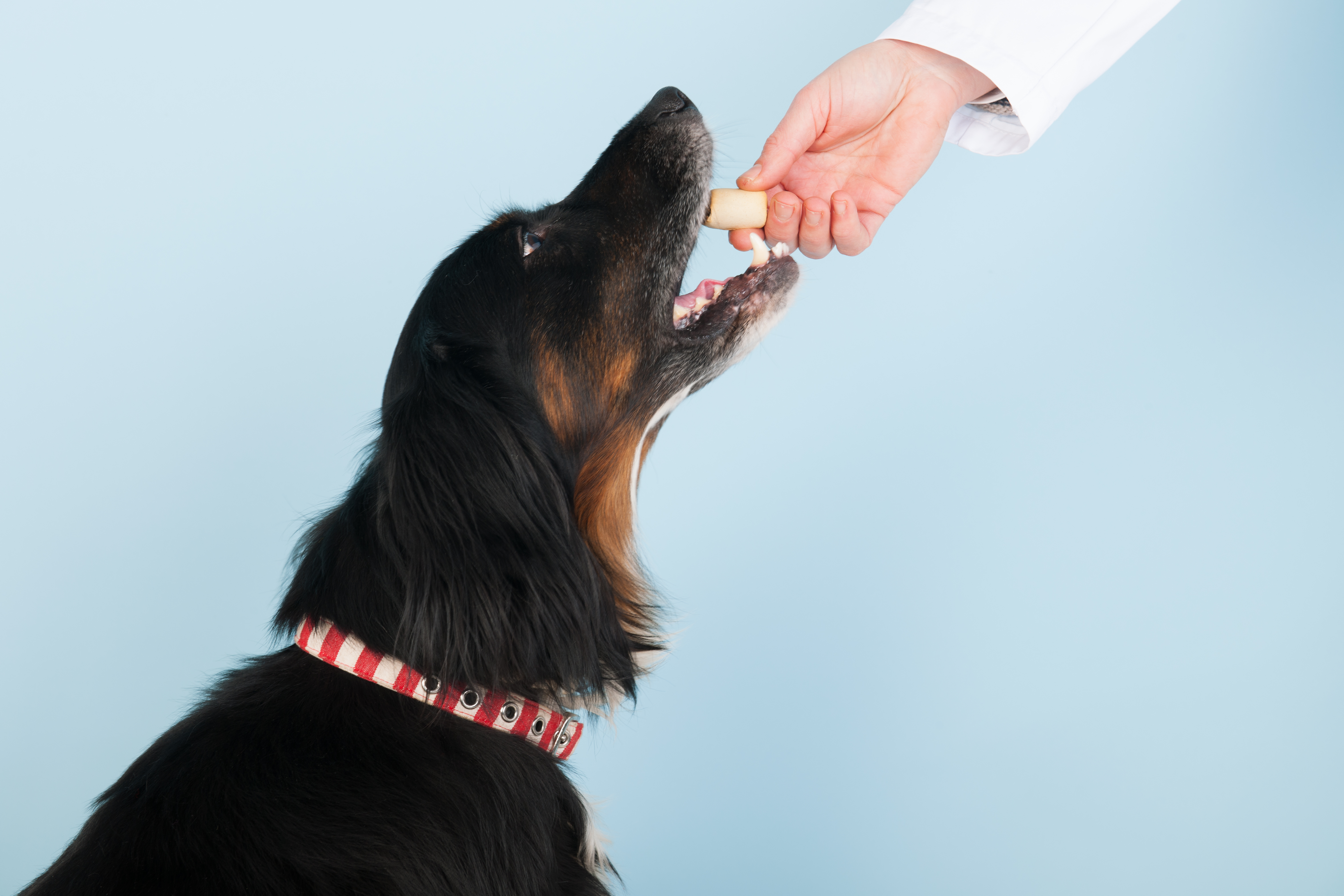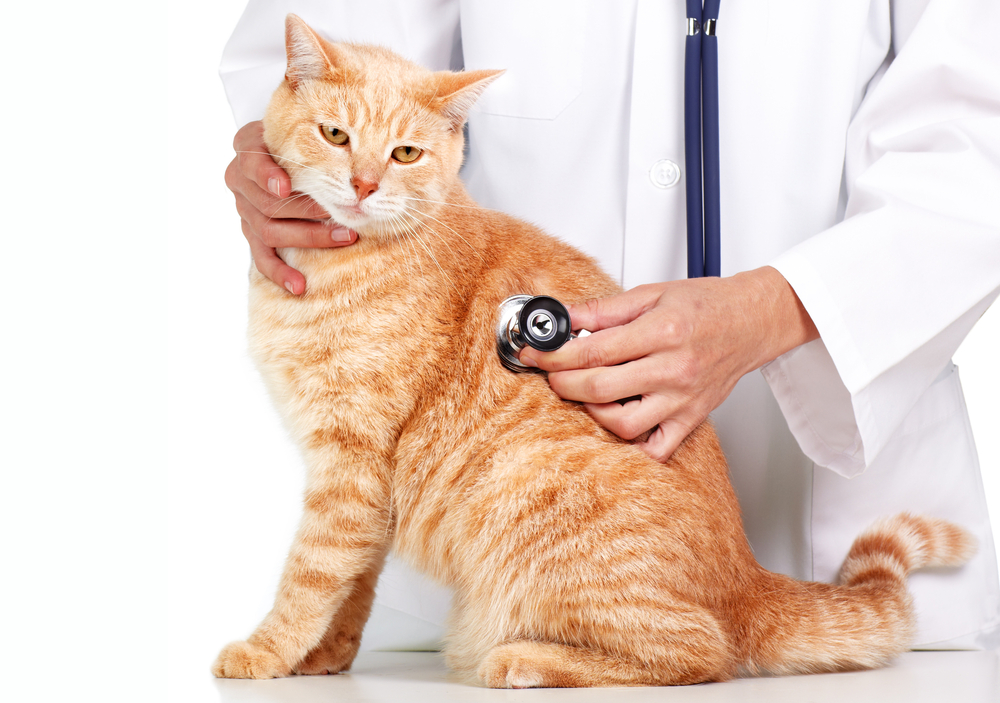From Nose to Tail: Examining Your Entire Pet
Because our pets age more quickly than we do, yearly veterinary checkups are tremendously important for both cats and dogs. Your pet can’t tell you when she’s not feeling well, so an annual exam will help to identify any health changes before they advance and become more difficult to treat. Here’s a peek at what we examine during each annual visit.
Cardiovascular system
During the cardiovascular system portion of an exam, we’ll listen to the heart using a stethoscope. Problems we’re listening for include:
- Abnormal rhythms
- Leaking valves
- Slow or fast rates
- Muffled heart sounds
We’ll also analyze circulation. Femoral pulses in the back legs are felt to verify that blood is flowing correctly. The gums are also checked for circulatory issues.
If we notice any abnormalities while examining the circulatory system, we’ll likely recommend further testing. Radiographs of the chest or an echocardiogram to determine the heart shape and size can provide vital clues as to what is happening inside your pet. An electrocardiogram supplies information on the electrical activity of the heart. Many cardiac diseases can be treated with medication, providing a good quality of life for your pet for years to come.
Respiratory system
While listening to your pet’s heart, the lung sounds are also inspected. Any crackles or wheezes can indicate a respiratory disease, such as:
- Pneumonia
- Asthma
- Collapsing trachea
- Bronchitis
- Influenza
- Calicivirus
- Distemper
- Adenovirus
These illnesses require supportive care to help your pet return to health. If you notice any of the following signs of illness in your pet, call our office:
- Coughing
- Sneezing
- Heavy panting, even in cool temperatures
- Increased respiratory rate
- Difficulty breathing
- Open-mouth breathing in cats
Integumentary system
The skin is your pet’s largest organ, and it deserves special attention. While examining your pet’s skin, we’re looking for signs of:
- Fleas, ticks, and mites
- Saliva staining from excessively licking a particular area (this can be an indication of pain)
- Hives
- Pustules
- Itching and scratching due to allergies
- Acute moist dermatitis, also known as a “hot spot”
- Dermatitis in skin folds (wrinkly dogs fall into this category)
- Ear infections caused by mites, yeast, or bacteria
- Wounds, scrapes, lacerations, bite wound abscesses
- Coarse fur and flaky skin due to poor diet or metabolic diseases
Skin conditions in pets can be challenging and frustrating to treat. They often require multimodal treatment and several medical progress examinations.

Digestive system
To thoroughly examine your pet’s digestive system, we literally have to examine her from nose to tail. Starting at the mouth, your pet’s teeth will be surveyed for signs of periodontal disease or any oral masses. Her abdomen will be palpated for indications of pain or abnormalities in the stomach or intestinal tract. Finally, we’ll confirm that there are no signs of redness, inflammation, or irritation around her rectum.
Changes in eating and elimination habits might indicate that your pet is not feeling well. Be sure to call us if you notice any changes in your pet’s routine.
Musculoskeletal and nervous systems
The musculoskeletal and nervous systems go hand-in-hand, and it can be difficult to diagnose problems and determine the cause of the issue. Several common illnesses of these body systems include:
- Cruciate ligament tears
- Arthritis
- Hip dysplasia
- Bone cancer
- Muscle sprain or strain
- Fractures
- Nerve damage due to injury
- Intervertebral disc disease
Your pet’s behavior is also considered during this part of the exam. Inform your veterinarian of any changes in behavior, such as:
- Increased vocalization
- Disorientation
- Aggression
- Fear
- Anxiety
- Urinating/defecating in the home when previously house trained
Behavior changes can occur as pets age, but some may involve underlying medical conditions. Let us know if you notice any changes in your pet’s behavior or routines.
Urinary system
Common urinary system problems in dogs and cats include urinary tract infections, inflamed bladders, and kidney and bladder stones. In addition to issues with the lower urinary tract, cats commonly develop renal problems as they age, which can sometimes progress to renal failure. It is crucial for cats to receive baseline bloodwork to evaluate kidney function and a urinalysis to check for any abnormalities in their urinary system.
Lymphatic system
The lymphatic system is the body’s primary defense. Special cells are produced here to help fight infection. During your pet’s physical exam, we’ll palpate her lymph nodes to ensure they are not swollen, which is an indicator of disease or illness.
Each system is vital to your pet’s health, and we’ll conduct a thorough physical exam each year so we can get a clear picture of her overall wellness. We also recommend annual blood work and a thorough dental exam during each preventive care visit.
When was the last time your pet visited the vet? Call us at 916-726-2334 to schedule your pet’s annual visit today.

